Five Great Canadian Bike Cities
By: Kiran Herbert, local programs writer
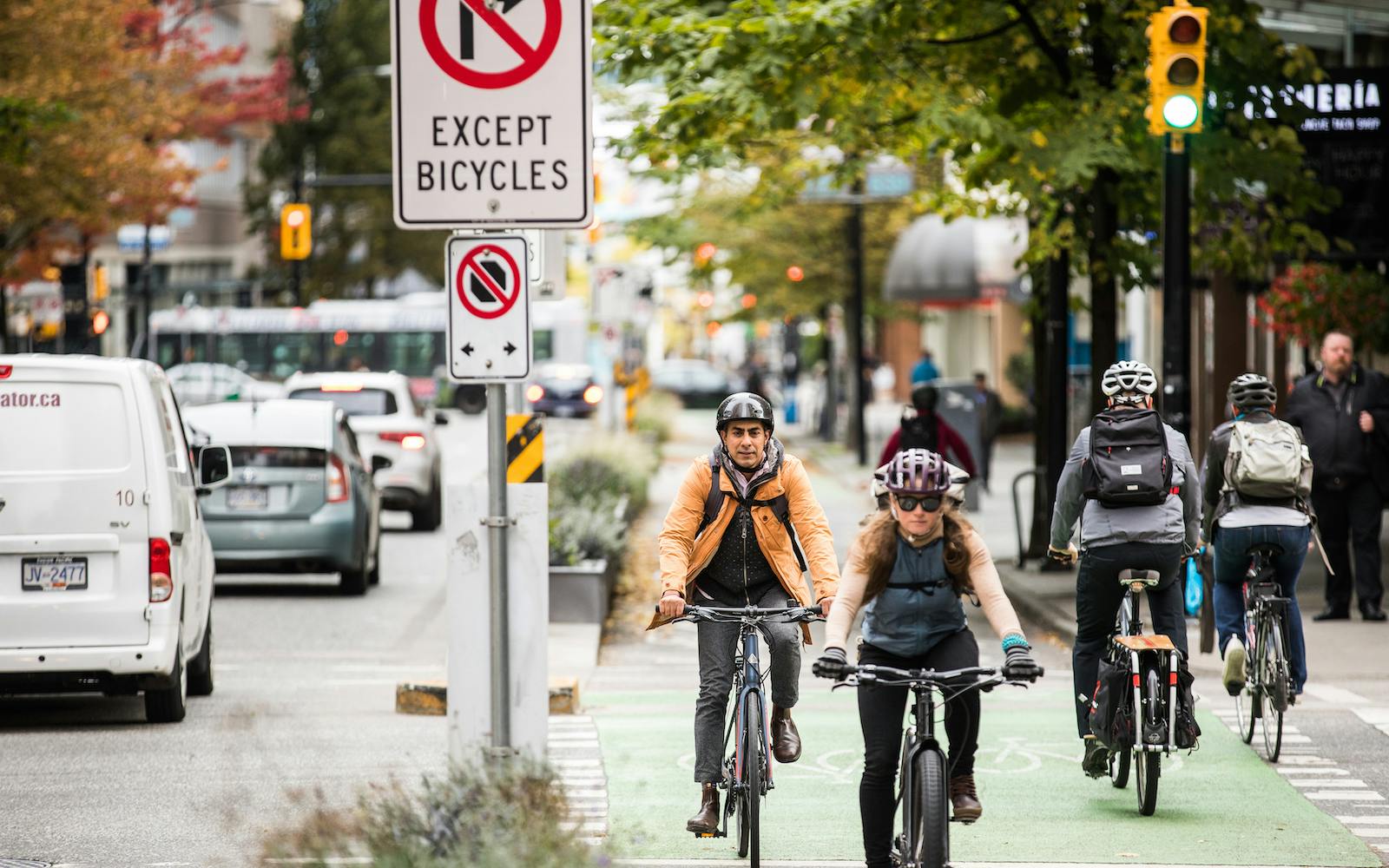
Spread out across provinces, these disparate locales showcase what bicycling north of the border is all about.
New this year, we revamped our City Ratings program to include more than 100 international cities in 11 countries worldwide. Although in past years we’ve featured Toronto and Vancouver, this is the first time 41 other Canadian cities are ranked. The cities below all fall within the top 10 in Canada, represent different provinces and offer a variety of lessons.
Montreal, Quebec
Score: 61
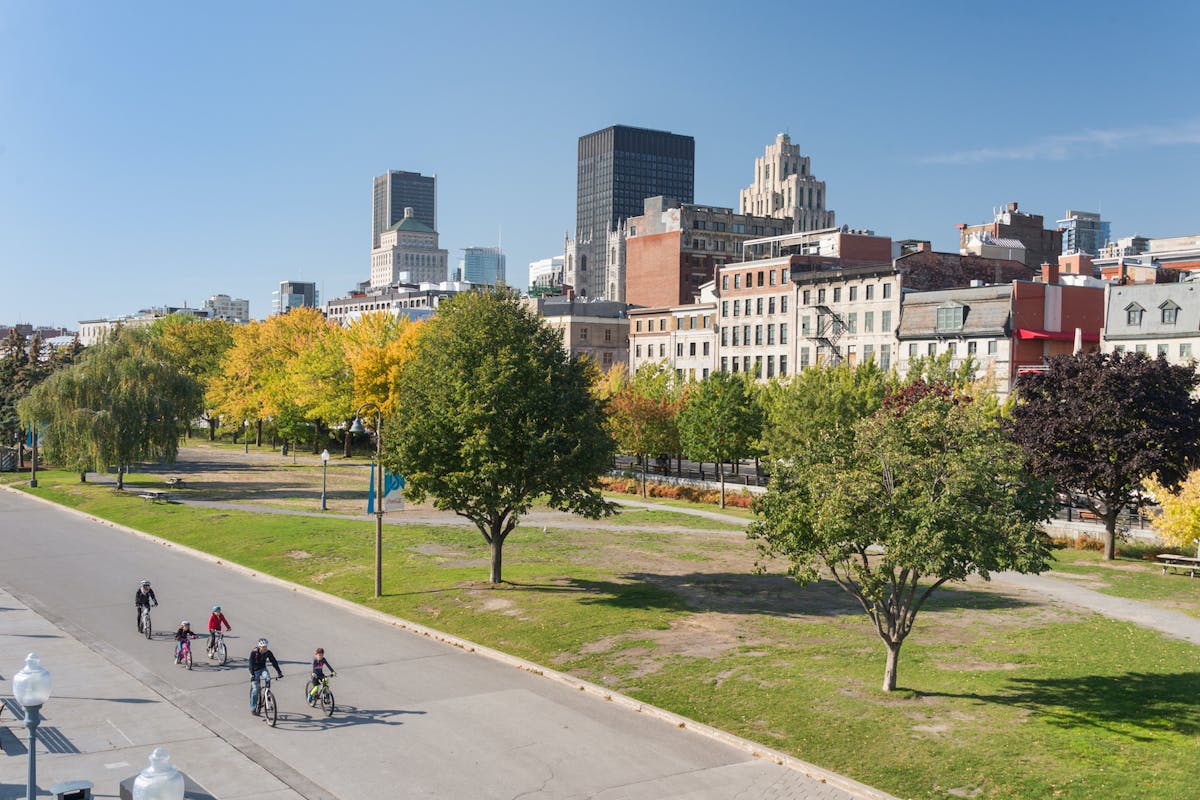
The Canadian city of Montreal, located on an island in the French-speaking province of Quebec, has a long history of activism for bicycle infrastructure. In fact, it was among the first Canadian cities to install bicycle lanes, and today bicycling makes up 13-15% of the city’s overall transportation mode share.
“One of the things that’s different with Montreal, is that it truly has a culture of cyclists,” says Jean-François Rheault, president and CEO at Vélo Québec, a Montreal-based bicycling nonprofit. “You see all kinds of people cycling, whether it's business people, students, women, young or old.”
In the 1990s, Montreal started to build protected bike paths as well as host bicycling festivals that drew upwards of 50,000 people. In 2007, bike share landed in Montreal, bolstered by another wave of new infrastructure and a citywide push for bicycling. Recently, there’s been a third wave with the arrival of the Reseau express velo or REV, a series of wide, express bike path networks throughout the city. In total, there are more than 1,000 kilometers (about 621 miles) of bike lanes in the greater Montreal area, roughly 40% of which are segregated from cars.
“In Montreal, people wear their normal clothes when they bike,” said Rheault. “We’re not quite like Denmark or the Netherlands, but in terms of culture in Canada, we’re the closest.”
Calgary, Alberta
Score: 59
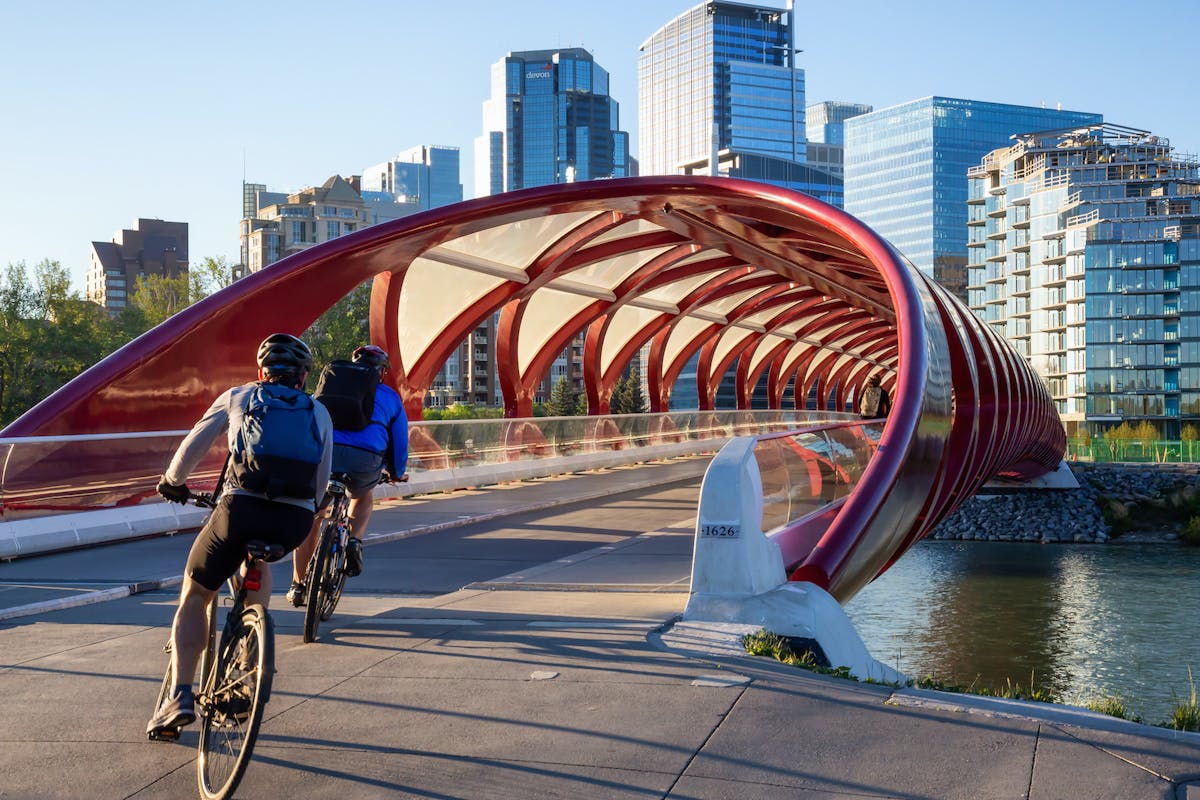
Calgary is a large city in Western Canada, with more than 1.2 million residents and an economy firmly rooted in the oil and gas industries. In fact, in 1967, Calgary had more cars per capita than any other city in the world. Calgary’s emergence as a leader when it comes to Canadian bicycling is proof that a car city can also be a bike city.
“We don’t fight the cars, we look to share the streets,” said Peter Spearing, president of nonprofit Bike Calgary. “We say, ‘You’ve built this great infrastructure for cars but some of it now can actually be shared with other users.’”
Bike Calgary has found success by making an effort to depoliticize bicycling, emphasizing the need for safe streets for kids to bike to school and an overall solutions-based approach to issues. Although residential street speed limits are high across much of Canada, last year Calgary reduced its own from 50 to 40 km/h (roughly 30 to 25 mph), resulting in a higher network score and safer streets. There’s been a more recent push to promote a culture of year-round bicycling, bolstered by priority snow-clearing efforts on major bike thoroughfares and the growing popularity of electric bicycles amongst commuters.
“We get 300 days of sun here with beautiful blue skies,” said Spearing, adding that the city has very little humidity, even on freezing winter days. “We’re definitely blessed with good weather for bicycling.”
Calgary has one of the most extensive urban pathway and bikeway networks in North America, with more than 1,000 kilometers of trails. In particular, the multi-use infrastructure throughout Calgary's downtown core is a source of city pride, with plenty of green space, a peace bridge and views of the Bow River. According to Spearing, the work now is about connecting “orphan bike paths” and creating a more equitable and inclusive system, across highways and into lower-income neighborhoods.
“We’re now looking at bringing in that equity focus and promoting cycling as an alternate mode of transportation,” said Spearing. “You don’t have to be fit, you don’t have to be white and you don’t have to be male to bike.”
Fredericton, New Brunswick
Score: 54
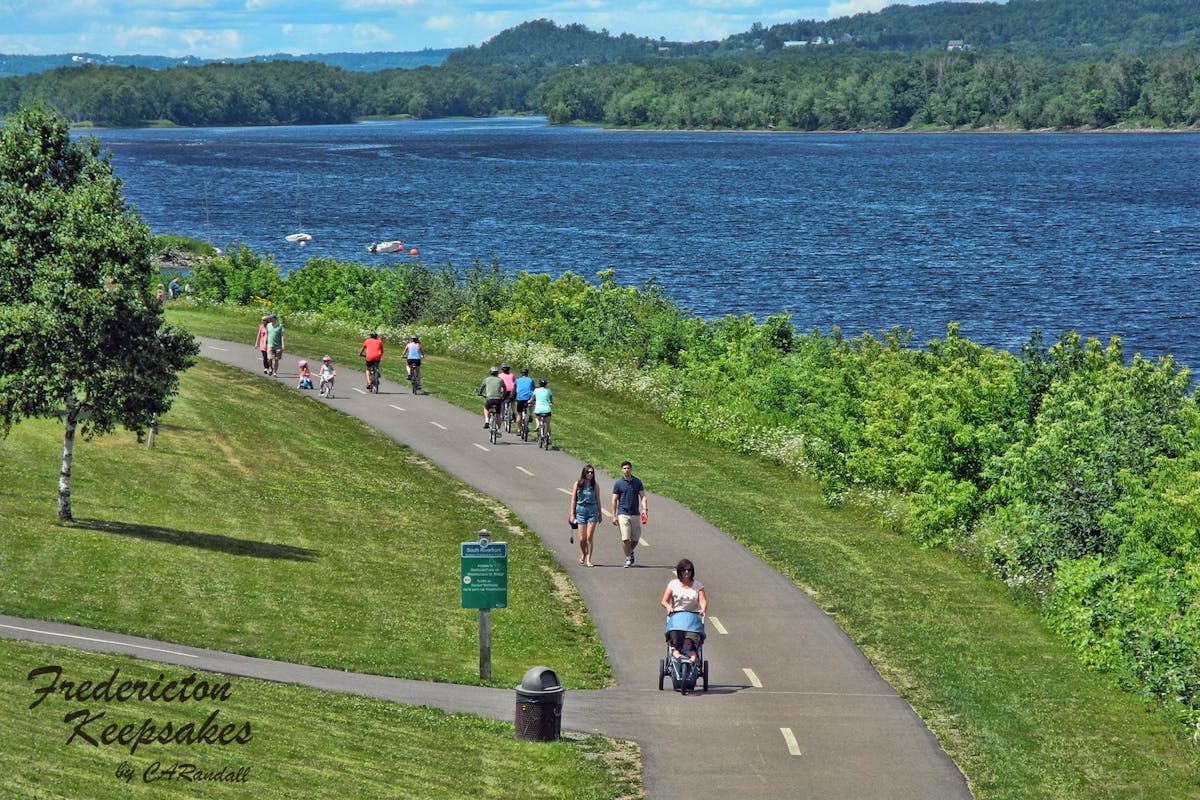
In the early 1990s, when Fredericton bicycle advocate Bill Thorpe was canvassing door to door to build bike lanes, people would curse and throw things at him. The railroad lines had moved out of town and residents didn’t want to see them replaced with bike trails, afraid crime rates would go up. Thorpe persevered, eventually founding the Fredericton Trail System, which today is loved by just about everyone in the city.
“Things have really been progressing here over the last decades,” said Stephen Marr, vice president of the Fredericton Trails Coalition. “People come from hours away to use our trails, which connect to all of the communities in town.”
The main trails go from one end of Fredericton to the other, spanning across the St. John River, which cuts through town, and linking up with low-stress neighborhood routes. There are 120 kilometers (about 74 miles) of non-motorized, multi-use trails within city bounds which also connect externally to the larger New Brunswick Trail System, allowing bicyclists to go from the city center to surrounding scenic rides and mountain bike trails. Of the city's trails, 28 kilometers are also paved, allowing for easy, yearlong maintenance and plowing in the winter — a saving grace for many of Fredericton’s university students.
“You can really bike everywhere in town,” said Marr, noting that electric bicycles have become especially popular among retired residents. “And in addition to bicycling, people use the trails for walking and running.”
In order to court more bikers, the city’s bike shops, municipal organizations and advocacy groups host a series of annual events and educational opportunities, many geared towards children. Based on community feedback, Fredericton is working towards a trail system with amenities, where residents might be able to stop while biking for lunch or a beer. By encouraging small businesses to set up along the trail system, as well as installing solar trail lights and murals done by local artists, that dream is slowly becoming a reality.
“Everyone in the Fredericton area is trail-centric,” said Marr, noting that tourism has a big role to play in the 58,000-person city, which is working to become a dedicated Trail Town. “A lot of smaller places that have an active transportation component to their recreation aren’t taking advantage of the business side of things. When people see that they can bring their bikes up here, spend the whole day biking and then bed down in town with their bike safely locked up? That’s a big draw that shouldn’t be overlooked.”
Ottawa, Ontario
Score: 51
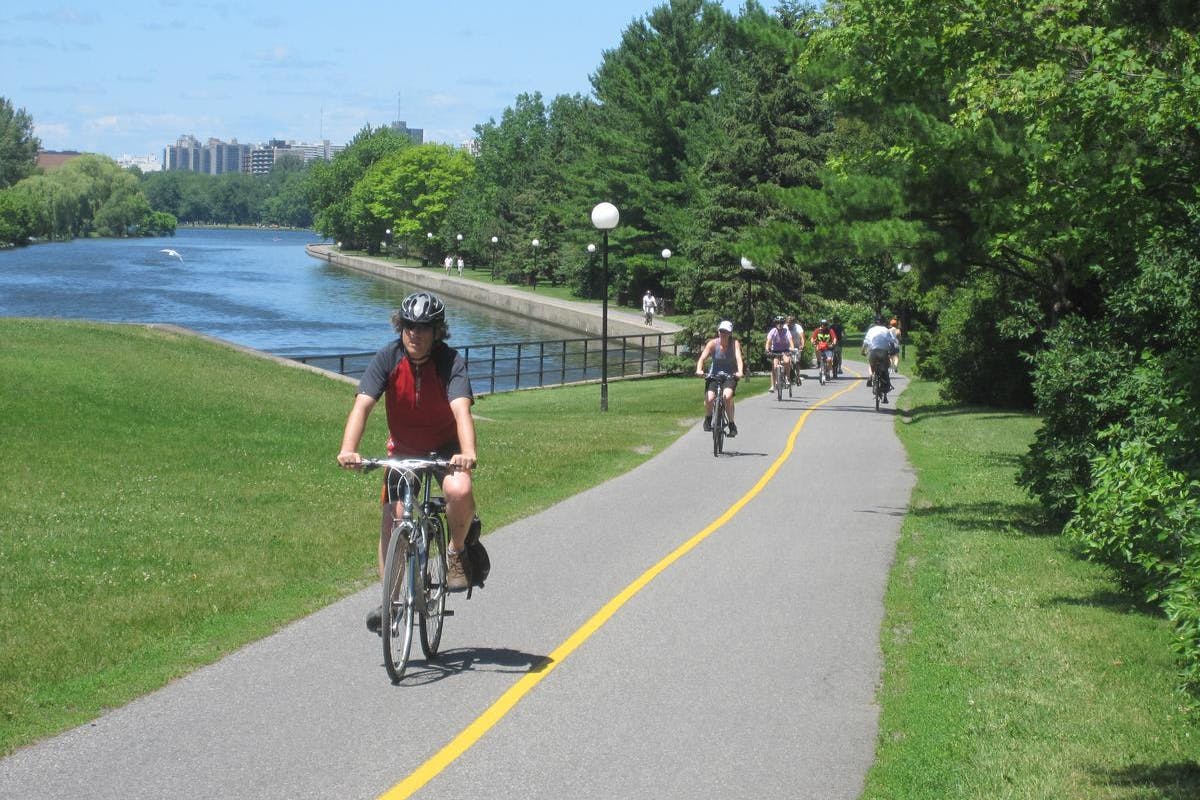
When Hans Moor first moved to Ottawa from the Netherlands in 1998, he was shocked by the lack of bicycling culture, despite the geography being relatively flat. There was Ciclovia, where the city closed streets for bicycling, but there weren't a lot of casual, everyday riders. Wanting to create change, Moor joined Bike Ottawa, where he started to advocate for stuff that was already seen as normal in his home country.
“In North America, biking is considered more of a sport than a mode of transportation,” said Moor, noting that photography, and media in general, have a key role to play here. “In the beginning, a lot of the work we did was around changing minds and making people more aware.”
Nowadays, you'll see people from all walks of life biking in Canada’s capital city, from seniors to families with two or three kids on cargo bikes. The National Capital Commission, a government agency, built the majority of Ottawa’s main pathways and the city eventually took up the work of connecting them with other dedicated multi-use pathways and low-stress, on-street routes. Every year, Ottawa sets aside budget funds to close gaps in the network and whenever a road is rebuilt, it's become standard to put it back together with a Complete Streets design. Today, Moor estimates that Ottawa, with a population of just under one million people, is about 95% of the way to having a complete, connected network.
“If you want to get people cycling, you have to start on a small scale,” said Moor. “You want to build a network that connects drug stores and churches and schools because that’s what makes people bike — most people bike five to six kilometers, not 50.”
After six years serving as Bike Ottawa’s president, Moor stepped down in order to create space for new ideas. These days he still blogs about bicycling in Ottawa, showcasing local advocacy opportunities or juxtaposing bicycling abroad, and creating fun maps of Ottawa’s bike network. When he compares Ottawa to the Netherlands now, Moor sees a lot of commonalities in demographics, types of bicycling and infrastructure — just at lower numbers.
Vancouver, British Columbia
Score: 47
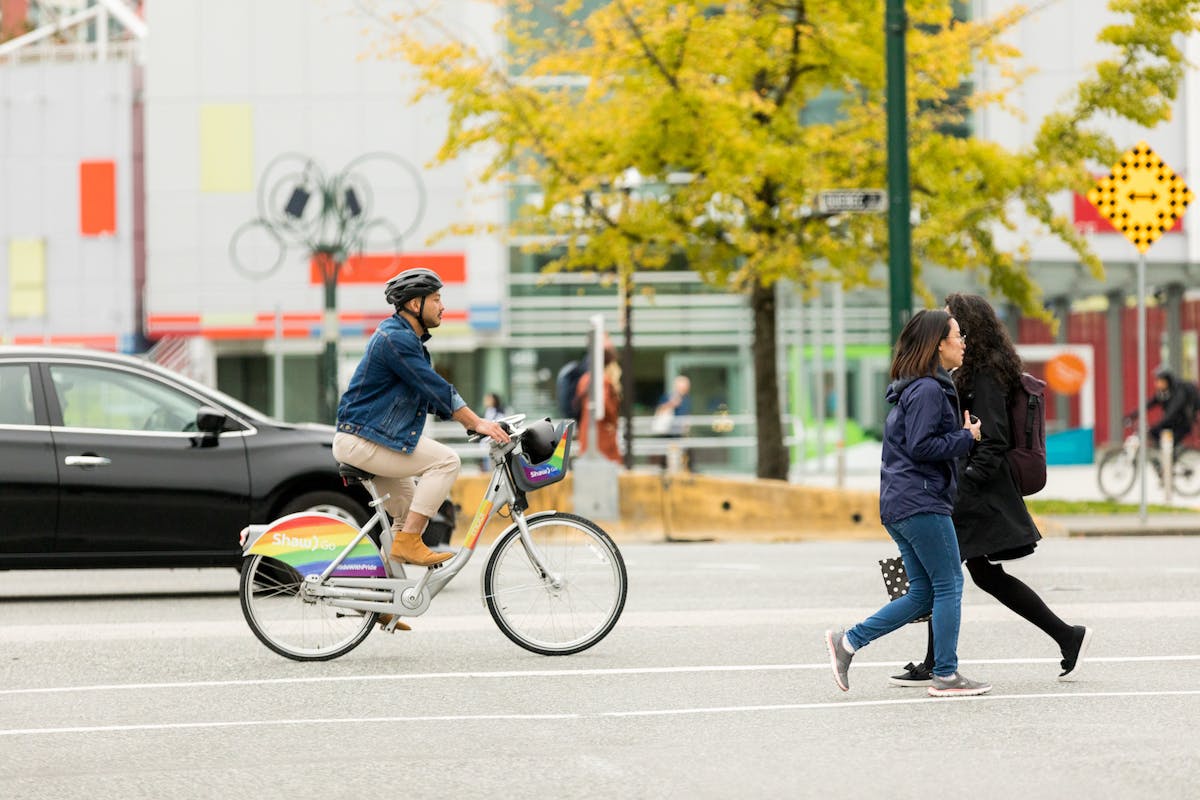
Despite having some of the best bicycling infrastructure in Canada, Vancouver has a relatively low 2021 City Ratings score of 47, meaning it still has a way to go when it comes to improving safety and access. Its community score, however, is the highest in Canada at 65, meaning residents believe it to be a great place for bicycling — in particular, people generally have good awareness of various biking facilities that are accessible in the city.
Bicycling is also the fastest growing mode of transportation in Vancouver, with trips increasing by a full 40% between 2008 and 2011 alone. The city also has more than 450 lane-kilometers (around 279 miles) of bike routes with more being added every year. Plus, there’s political will for a holistic approach to bicycling and Slow Streets initiatives, as well as a healthy dialogue regarding widespread bicycling education programs for kids.
“Vancouver has engaged all aspects of what creates a great cycling environment,” said Erin O'Melinn, executive director at Hub Cycling, a bicycling nonprofit based in Vancouver. “It has a connected cycling network that’s comfortable for most and the start of a systemic education system. By pairing infrastructure with promotion, the city is showing people how they can — and why they should — switch to cycling.”
A city of around 675,000 people, Vancouver has focused on serving its busiest, most populous destinations, leading to a fantastic network of protected bike lanes in its downtown core but less infrastructure throughout lower-income and more residential areas. O’Melinn believes Vancouver is really a leader when it comes to emphasizing a connected network and shifting people to new modes of transportation but like most cities, it has more work to do when it comes to equity and filling in network gaps.
“There has been some really meaningful progress in the last 10 to 15 years and the city’s well on its way to making bicycling an integrated part of the culture,” said O’Melinn, emphasizing that Vancouver is focused on bringing in more diverse ridership. “I would not say cycling in spandex is the majority of people in Vancouver — there’s a lot of people in everyday clothes, which is great to see.”
Despite a default provincial speed limit of 50 km/h (about 30 mph), Vancouver has lowered speed limits on all shared residential neighborhood bikeways. If the city were to impose a blanket default of 30 km/h on all residential streets, however, not just its bikeways, the city’s overall score would undoubtedly be higher.
How does your city rank? Check out our 2021 City Ratings and learn how to improve your score.
Related Topics:
